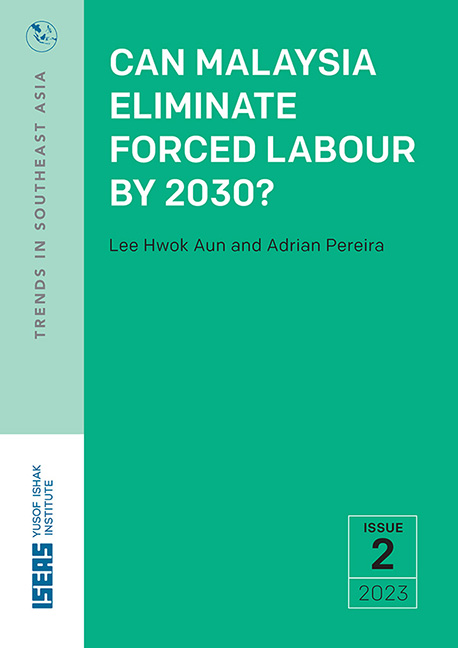Can Malaysia Eliminate Forced Labour by 2030?
Published online by Cambridge University Press: 09 January 2024
Summary
OLD PROBLEM, NEW URGENCY
The spotlight has fallen on the persistent problem of forced labour in Malaysia lately, due to both infringements and policy responses. Forced labour encompasses harsh exploitation and abuse, but also less overt forms of coercion such as retention of passports, squalid living quarters and debt bondage, some of which have seemingly become endemic to the country. The intertwined phenomena of labour outsourcing and undocumented status have exacerbated worker vulnerability to forced labour conditions. Recent high-profile cases, especially involving import bans on rubber glove manufacturers and palm oil producers, and the country’s downgrade in the US Department of State’s Trafficking in Persons (TIP) report from three years in a row on Tier 2 Watch List to Tier 3 in 2021 and 2022 (US Department of 2021a; US Department of State 2022).
The past year also witnessed formal institutional landmarks in the fight against forced labour and the concurrent problem of human trafficking. In June 2021, Malaysia renewed its national action plan on trafficking in persons for a third five-year term (NAPTIP 3.0). On 26 November 2021, the National Action Plan on Forced Labour (NAPFL) was launched, which set the ultimate goal of eradicating the problem within a decade. This objective, oriented around justice and basic rights, fits within Malaysia’s professed adherence to decent work standards and its broader ambition of reducing reliance on labour-intensive, low-wage production, and fostering quality high-wage jobs.
Why does forced labour persist, and can Malaysia put an end to it by the target date of 2030? This article proceeds by surveying migrant flows and key features, followed by a brief overview of relevant laws and policies. We consider major structural and operational problems that have perpetuated forced labour, and Malaysia’s efforts to combat forced labour that were initiated prior to the pandemic. We then examine salient cases since 2020 that have dented Malaysia’s reputation and underscored the importance of a robust and credible response. The NAPFL’s scope and ambition may concur with the magnitude and complexity of the problem, but Malaysia must apply a more systemic approach and focus on effective and transparent implementation to deliver on the promise of eradicating forced labour.
- Type
- Chapter
- Information
- Can Malaysia Eliminate Forced Labour by 2030? , pp. 1 - 48Publisher: ISEAS–Yusof Ishak InstitutePrint publication year: 2023



